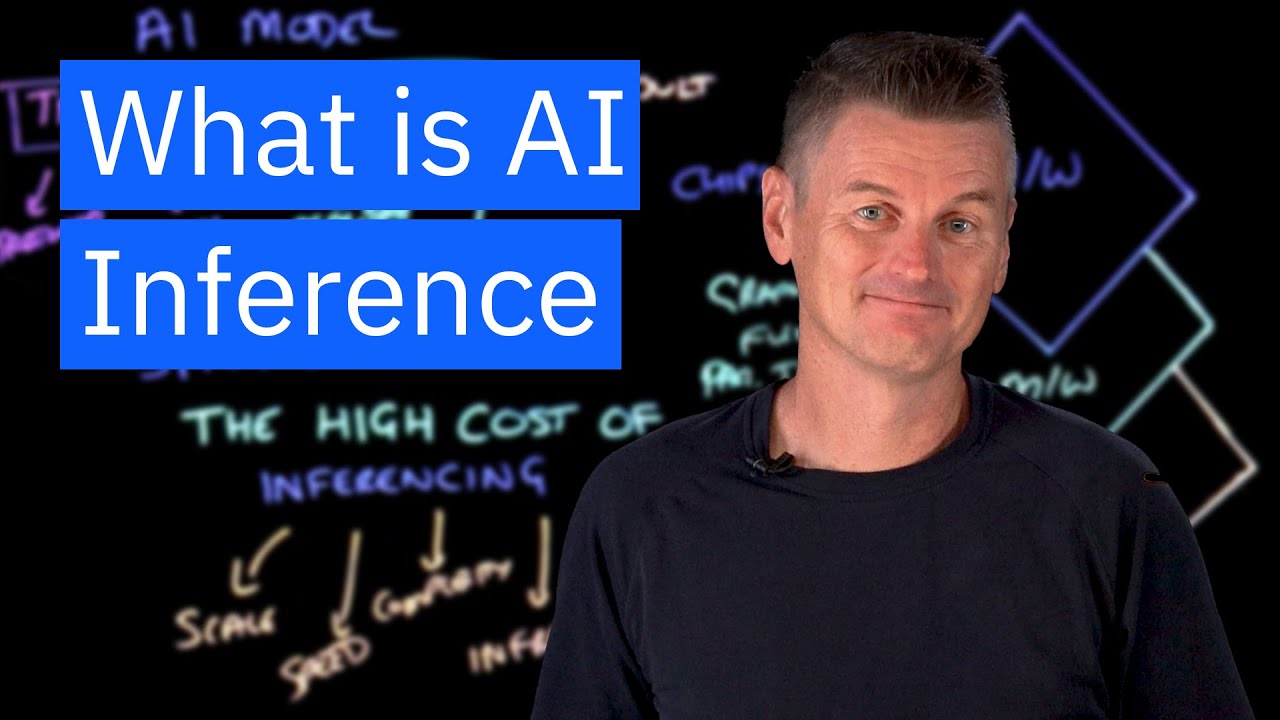The video explains AI inferencing as the critical stage where trained models apply their learned knowledge to make predictions on new data, highlighting its significant costs and energy consumption due to the high frequency of inferencing operations. It also discusses advancements in hardware and software aimed at improving the speed and efficiency of inferencing, such as specialized AI chips and model compression techniques.
The video discusses the concept of AI inferencing, which is the stage where an AI model applies the knowledge it gained during training to make predictions or solve tasks. Inferencing is described as the model’s “Moment of Truth,” where it is tested on real-time data. The video outlines the two primary stages of an AI model: the training stage, where the model learns relationships within its training data, and the inferencing stage, where it utilizes that learned information to interpret new, unseen data. The goal of inferencing is to produce actionable results based on the model’s predictions.
During the training phase, a deep learning model processes a large labeled dataset to recognize patterns and features associated with specific outcomes. For example, in the case of a spam detection model, the model learns to identify characteristics of spam emails, such as certain keywords or unusual sender addresses. This learning is encoded into model weights, which are used during the inferencing stage. When a new email arrives, the model analyzes its features against the learned patterns to determine whether it is spam or not, providing a probability score that informs business rules for handling the email.
The video highlights the significant costs associated with AI inferencing, noting that while training models can be expensive, the ongoing costs of inferencing are often higher. Inferencing occurs millions or billions of times over a model’s lifetime, leading to substantial energy consumption and carbon emissions. The video emphasizes that approximately 90% of an AI model’s life is spent in inferencing mode, which contributes to its overall carbon footprint, sometimes exceeding that of an average American car.
Several factors contribute to the high costs of inferencing, including the scale of operations, the need for speed, and the complexity of AI models. As models become larger and more sophisticated, they require more computational resources for each inference. The video discusses the importance of infrastructure, such as data centers and network connections, in managing these costs. It raises the question of whether there are more efficient ways to perform inferencing.
To improve the speed and efficiency of inferencing, the video outlines advancements in hardware and software. Specialized AI chips are being developed to optimize mathematical operations common in deep learning, significantly speeding up inferencing tasks. On the software side, techniques like model compression (pruning and quantization) help reduce model size and memory requirements without sacrificing accuracy. Middleware solutions, such as graph fusion and parallel tensor execution, further enhance performance by optimizing communication between hardware components. Overall, the video illustrates how inferencing transforms complex training into rapid problem-solving, exemplified by the spam detection model.
